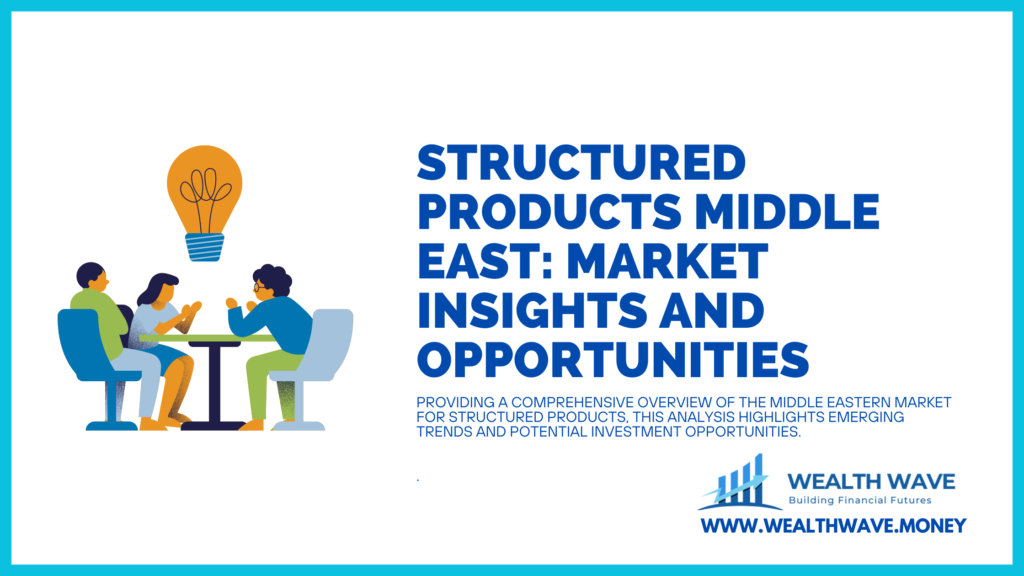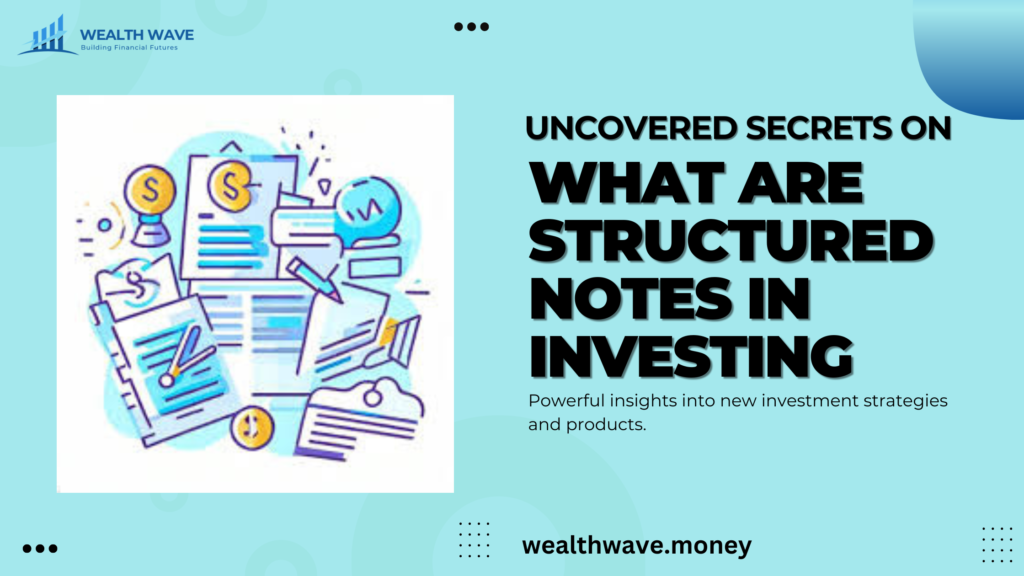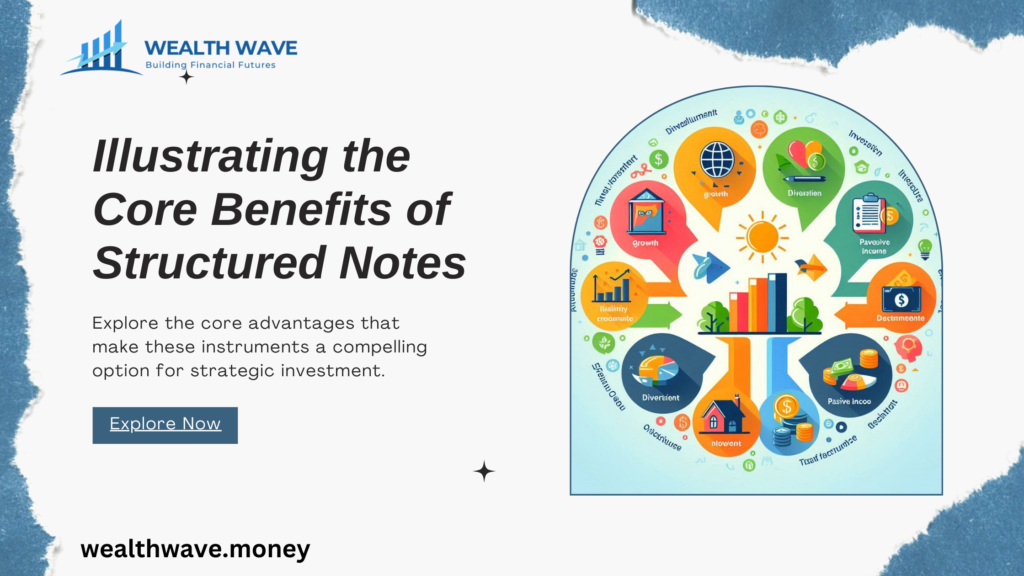Navigating the investment landscape can feel overwhelming, with each of us on a quest to grow our wealth in opportunity-rich markets like those found in the Middle East and Africa (EMEA).
The real challenge? Finding investments that align just right with our risk tolerance and financial dreams. It’s easy to feel adrift amid all the possibilities.
In this journey we share with you, we discovered something quite eye-opening: Dubai has emerged as an appealing market for structured products thanks to its more relaxed regulatory atmosphere.
This insight propelled us into further exploration of structured products Middle East, uncovering their ability to offer tailor-made investment solutions perfect for specific market dynamics.
Through this article, we’ll walk you through what structured products entail, unpack their advantages and risks, and evaluate how they compare with traditional investment options. Get ready to dive deep into crafting investments that resonate with your goals in the EMEA marketplace.
Key Takeaways (Structured Products Middle East)
1. Structured products in the Middle East offer personalized investment options that can align with our unique financial goals. These products let us tap into various asset classes and market opportunities, providing flexibility to craft investments suited for our risk tolerance and objectives.
2. The relaxed regulatory environment in places like Dubai encourages innovation in structured products, making the Middle East an attractive region for these types of investments. This backdrop allows investors to explore more creative solutions without being heavily restricted by rules.
3. Investing in structured products comes with its set of risks including hidden fees and limited liquidity which could impact our returns and ability to access funds when needed. It’s important for investors to carefully assess these factors before diving into such complex instruments.
4. Structured products have the potential to offer higher returns compared to traditional investments due to their customizable nature and exposure to a wide range of underlying assets. However, understanding their complexities is key to leveraging them effectively within our portfolios.
5. Diversification is crucial when investing in structured products as it helps mitigate risks associated with volatile markets or specific asset classes. By spreading out investments across different areas, we improve the chances of achieving stable long-term growth while minimizing potential losses.
What are Structured Products?
Structured products are unique financial instruments that combine different assets to meet specific investment needs. They offer flexibility in designing solutions tailored to various market conditions and investor goals.
Tailored Investment Solutions
Structured products serve as highly customizable investment solutions that cater to our unique financial goals. These financial products allow us to gain exposure to various underlying asset classes and market opportunities, including derivatives, with precision tailored to match our specific investment needs and risk profiles.
Their ability to link returns to multiple reference market indices adds depth, though it also increases complexity. As we explore these innovative offerings in the Middle East structured finance landscape, we recognize their potential for long-term investors seeking both growth and security in a competitive market environment.
Designed for Specific Market Configurations
Structured products offer a unique investment vehicle tailored specifically for various market configurations. They link to diverse underlying asset classes and can involve multiple reference market indices, adding layers of complexity and risk.
This adaptability makes them particularly appealing to long-term investment seeking opportunities in the rapidly growing structured products market in the Middle East and Africa. Our financial landscape allows us to customize these products to meet individual needs with precision, aligning our strategies within Dubai’s relaxed regulatory environment, which enhances their attractiveness as viable options.
The flexibility inherent in structured products means they can be adjusted according to current economic conditions or investor preferences. By doing so, we gain exposure to specific markets while addressing potential risks and maximizing returns.
Thus, investing in these specialized instruments allows us to navigate the intricacies of the derivatives market effectively while striving for superior performance in our portfolios focused on Middle East wealth management.
Why are Structured Products Popular in the Middle East & Africa?
Structured products attract investors in the Middle East and Africa due to their growth potential. The market offers unique opportunities, and a relaxed regulatory environment encourages innovation in investment solutions.
Emerging market with Potential for Growth
The Middle East and Africa represent an emerging market with significant potential for growth in the structured products industry. As we explore investment opportunities, it becomes clear that this region is gaining attention due to its relaxed regulatory environment, especially in places like Dubai.
This favorable climate encourages innovation and creativity within the financial services sector, allowing tailored solutions to meet diverse investor needs.
Investors are drawn to structured products because they offer exposure to varied underlying asset classes while catering specifically to unique market configurations. The complexity of many structured products here often involves multiple reference market indices, presenting both challenges and opportunities.
Our interest lies in harnessing these dynamics for long-term investors seeking Safe haven strategies amidst evolving economic landscapes.
Relaxed Regulatory Environment
The growth of structured products in the Middle East benefits from a relaxed regulatory environment. This climate attracts various investors, including long-term investors, who are drawn to innovative financial solutions.
Dubai stands out as a prime market because it encourages diverse investment strategies while minimizing unnecessary restrictions. The flexibility provided by this regulatory framework allows us to explore customized investment options linked to multiple reference market indices and underlying asset classes.
As we navigate through this landscape, it’s crucial to recognize that these characteristics can lead to increased complexity and risk. Nonetheless, such an environment enhances our ability to craft investments tailored perfectly for our needs.
Structured products become valuable tools within private banking and asset management in the region, unlocking exciting opportunities for capital growth amidst evolving market conditions in Middle East financial services.
Potential Risks of Investing in Structured Products
Investing in structured products carries certain risks that we must understand. Some hidden fees can take a bite out of our returns, and liquidity might be limited when we need to access our funds.
Hidden Fees and Costs
Hidden fees and costs can significantly impact our returns from structured products. Many of these investments, particularly in the Middle East and Africa, may involve multiple reference market indices that increase their complexity and associated risks.
These hidden charges may come from management fees or transaction costs that are not immediately apparent.
Investors should be cautious about these additional expenses when evaluating a product’s potential. The highly customizable nature of structured products means we need to scrutinize all aspects, including any applicable fees.
Understanding this hidden truth is vital for long-term investors seeking success in the safe haven markets of the Middle East.
Limited Liquidity
Limited liquidity often poses challenges for investors in structured products. These investment vehicles can be complex and linked to multiple reference market indices, which may lead to difficulties when attempting to sell them quickly.
In the Middle East and Africa, we find that many structured products are tailored for specific market configurations, which can further complicate their tradability. As long-term investors focused on opportunities within the Middle East banking landscape, we must recognize that our ability to cash out may not align with urgent financial needs.
The nature of these investment options means they might carry hidden fees or costs if we decide to exit early. For those interested in navigating the landscape of structured products as a part of their middle east investment strategy, understanding this limited liquidity is crucial.
We should approach our investments with an awareness that these derivative products may not always provide immediate access to cash when circumstances change suddenly.
The Appeal of Structured Products
Structured products offer unique investment options that we can customize to fit our financial goals. They present opportunities for potentially higher returns, making them attractive for those looking to enhance their portfolios.
Customizable Investment Options
Customizable investment options are a key strength of structured products in the Middle East. We can create these investments to meet our specific goals, preferences, and risk tolerances.
This level of personalization allows us to adjust parameters like duration, capital protection, or types of underlying assets. The ability to link them with various reference market indices adds layers of flexibility that suit diverse strategies.
As we explore structured products, we see a history that dates back to their emergence in the UK during the early 1990s. They have since evolved into complex instruments commonly used in private banking across the Middle East and Africa.
By enabling exposure to numerous asset classes and market opportunities, these customizable investment solutions provide an effective way for long-term investors looking for inventive strategies within a safe haven market environment.
Potential for Higher Returns
Customizable investment options lead us to explore the potential for higher returns with structured products. These financial instruments offer opportunities tied to diverse underlying asset classes and multiple market indices, which can drive impressive gains.
In the Middle East, where a relaxed regulatory environment fosters innovation, we find that structured products cater specifically to long-term investors seeking growth in emerging markets.
Historically rooted in private banking across the region, these investments provide exposure designed to meet our unique needs while aiming for superior performance compared to traditional portfolios.
Many investors are attracted by these characteristics as they strive for exceptional outcomes amid evolving market configurations.
Structured Products Vs Traditional Portfolios
Structured products offer unique investment strategies compared to traditional portfolios. They can provide different levels of risk and potential returns, making them an interesting choice for many investors.
Differences in Risk and Return
Structured products often exhibit different risk and return profiles compared to traditional investments. They can offer higher potential returns, especially in volatile market configurations, due to their ability to provide exposure to diverse underlying asset classes.
However, this complexity can also increase risk. Many structured products in the Middle East and Africa involve multiple reference market indices, contributing to both their allure and intricacies.
Investors seeking customized solutions must balance these factors carefully.
Understanding these differences helps us appreciate the importance of diversification within our portfolios. We recognize that a blend of structured products with traditional assets can yield a more balanced investment strategy.
Importance of Diversification
Diversification plays a crucial role in investment strategies, especially for long-term investors in the Middle East asset management landscape. By spreading investments across various assets and market configurations, we can mitigate risks associated with any single investment.
Structured products allow us to gain exposure to diverse underlying asset classes and multiple reference market indices. This variety increases our chances of achieving optimal returns while reducing vulnerability to market fluctuations.
Building a diversified portfolio becomes even more important given the historical complexities associated with structured products in the Middle East and Africa. With many options available, we enhance our overall investment experience by choosing different products tailored to fit varying risk appetites.
Customizable features within these structured investments empower us as investors, ensuring that we can adapt our strategies according to changing market conditions while seeking potential growth opportunities.
Conclusion
Structured products offer an exciting opportunity for us in the Middle East and Africa. We’ve explored how these investment vehicles cater to personalized needs while addressing specific market setups.
Their growing popularity reflects a unique blend of potential growth and a favorable regulatory landscape, especially in places like Dubai. Yet, we must stay vigilant about the risks involved, including hidden fees and liquidity issues.
As long-term investors, we can benefit from customizable options that may lead to higher returns compared to traditional investments. Understanding both structured products and conventional portfolios enhances our ability to diversify effectively.
Engaging with this evolving market opens doors for innovative strategies tailored just for us.
What steps will we take next? A deep dive into further research or consultation could empower our investment decisions even more. Armed with insights about structured products, let’s seize this chance to strengthen our financial future together!
FAQs
Q1. What are Structured Products in the Middle East?
Ans. Structured Products in the Middle East are complex financial tools designed for long-term investors who want to benefit from different market configurations.
Q2. Who can invest in these Structured Products?
Ans. These products are ideal for long-term investors seeking to diversify their portfolio and willing to understand the risks involved.
Q3. How do market configurations affect Structured Products?
Ans. Market configurations, such as interest rates or stock prices, directly impact the returns of these structured products, creating opportunities for profit but also potential risk.
Q4. Are there specific benefits of investing in Structured Products in the Middle East?
Ans. Yes, investing in Middle Eastern structured products can offer unique investment opportunities due to regional economic growth and diverse market dynamics.




